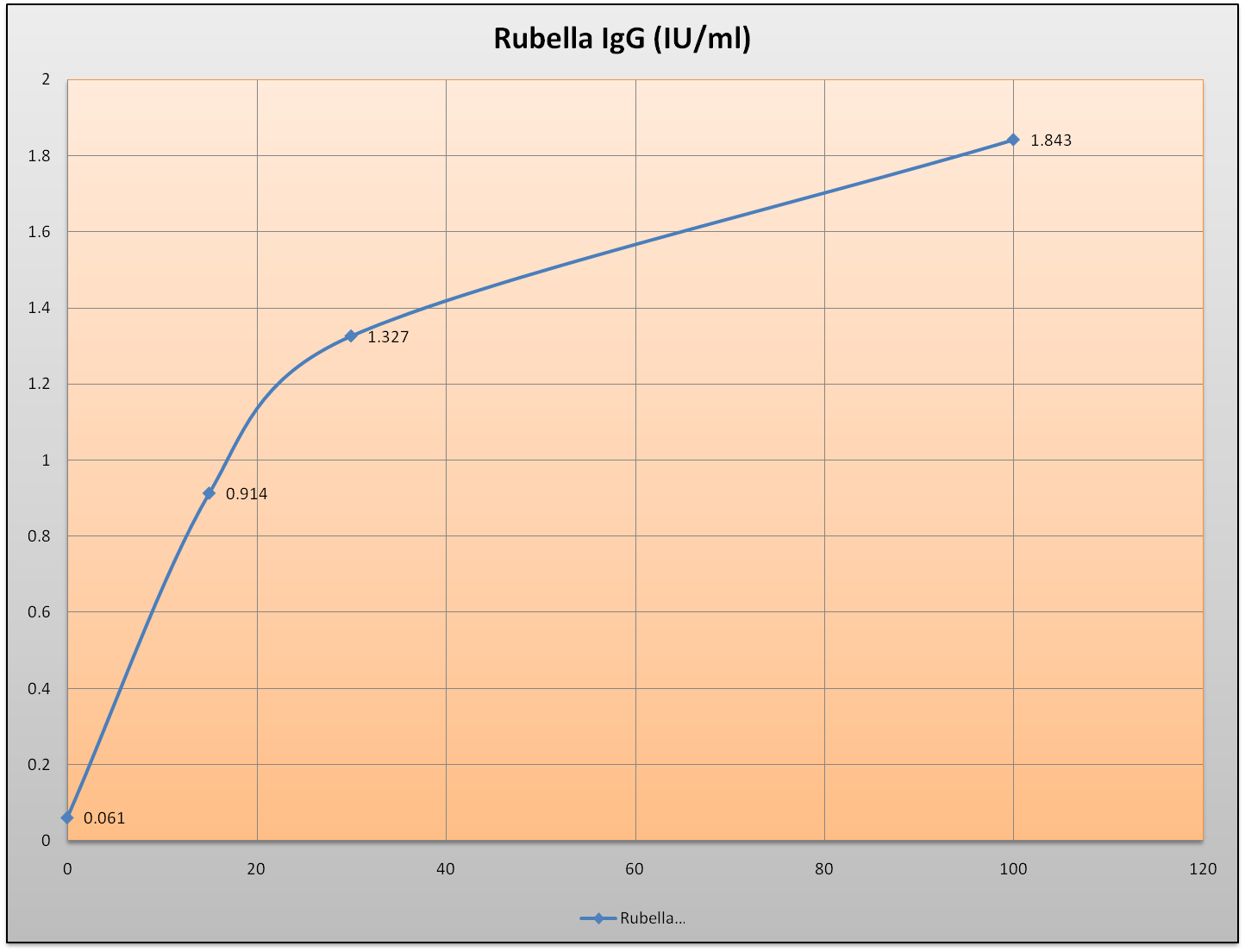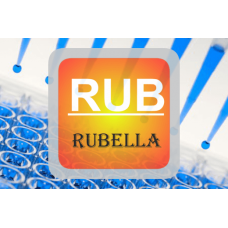Shopping Cart
0 item(s) - $0.00Rubella ELISA - Rubella IgG
Availability: In Stock
Add to Compare
ENZYME IMMUNOASSAY FOR THE DETECTION OF IGG ANTIBODIES TO RUBELLA VIRUS IN SERUM
FOR RESEARCH USE ONLY. NOT FOR USE IN DIAGNOSTIC PROCEDURES
SUMMARY
Rubella, also known as German measles or three-day measles, is an infection caused by the rubella virus. This disease is often mild with half of people not realizing that they are sick. A rash may start around two weeks after exposure and last for three days. It usually starts on the face and spreads to the rest of the body. The rash is not as bright as that of measles and is sometimes itchy. Swollen lymph nodes are common and may last a few weeks. A fever, sore throat, and fatigue may also occur. In adults joint pain is common. Complications may include bleeding problems, testicular swelling, and inflammation of nerves. Infection during early pregnancy may result in a child born with congenital rubella syndrome (CRS) or miscarriage. Symptoms of CRS include problems with the eyes such as cataracts, ears such as deafness, heart, and brain. Problems are rare after the 20th week of pregnancy.
Rubella is usually spread through the air via coughs of people who are infected. People are infectious during the week before and after the appearance of the rash. Babies with CRS may spread the virus for more than a year. Only humans are infected. Insects do not spread the disease. Once recovered, people are immune to future infections. Testing is available that can verify immunity. Diagnosis is confirmed by finding the virus in the blood, throat, or urine. Testing the blood for antibodies may also be useful.
Rubella is preventable with the rubella vaccine with a single dose being more than 95% effective. Often it is given in combination with the measles vaccine and mumps vaccine, known as the MMR vaccine. With a population vaccination rate of less than 80%, however, more women might make it to childbearing age without developing immunity and issues could increase. Once infected there is no specific treatment.
Rubella is a common infection in many areas of the world. Each year about 100,000 cases of congenital rubella syndrome occur. Rates of disease have decreased in many areas including the Americas as a result of vaccination. There are ongoing efforts to eliminate the disease globally. The name "rubella" is from Latin and means little red. It was first described as a separate disease by German physicians in 1814 resulting in the name "German measles." On April 29, 2015, the World Health Organization declared the Americas officially free of rubella transmission.
PRINCIPLE OF THE TEST
Purified Rubella antigen is coated on the surface of microwells. Dilute serum sample is added to the wells, and the Rubella IgG- specific antibody, if present, binds to the antigen during incubation. After washing the wells to remove unbound sample, antibody to IgG conjugated with horseradish peroxidase (HRP) is added and incubated at 37°C for 30 minutes. Unbound conjugate is removed by a subsequent washing step. A solution of TMB Reagent is then added to the microwells. The enzyme conjugate catalytic reaction is stopped at a specific time. The intensity of the color generated is proportional to the amount of IgG-specific antibody in the sample. The results are read by a microwell reader compared in a parallel manner with calibrators and controls.
EXAMPLE OF STANDARD CURVE
Results of a typical standard run with optical density readings at
450 nm shown in the Y axis against Rubella concentrations shown in the X axis. This standard curve is for the purpose of illustration only, and should not be used to calculate unknowns. Each user should obtain his or her own data and standard curve.

| General | |
| ANALYTE GROUP | Rubella |
| GROUPING | Infectious Diseases:Virus |
| PRODUCT NAME | ELISA |
| STORAGE | Store the kit at 2-8°C |
| COUNTRY OF ORIGIN | USA |
| DISCOUNTS | Bulk Packaging; High Volume |
| ELISA | |
| TESTS PER KIT | 96 (12 x 8) |
| CALIBRATION RANGE | 0 - 100 IU/mL (Recommended) |
United Immunoassay, Inc. © 2025


































